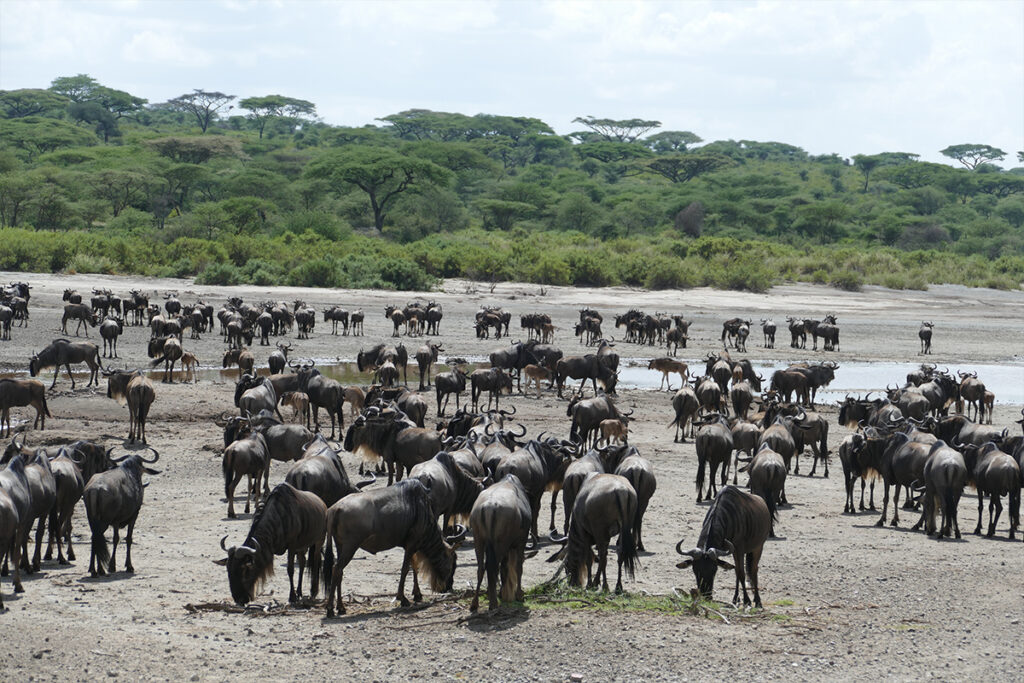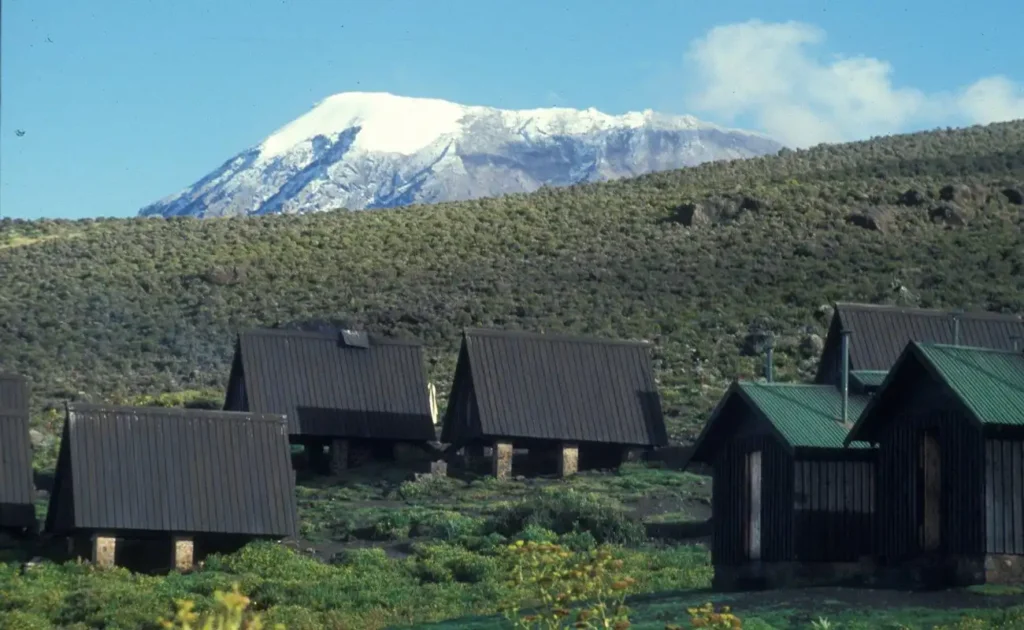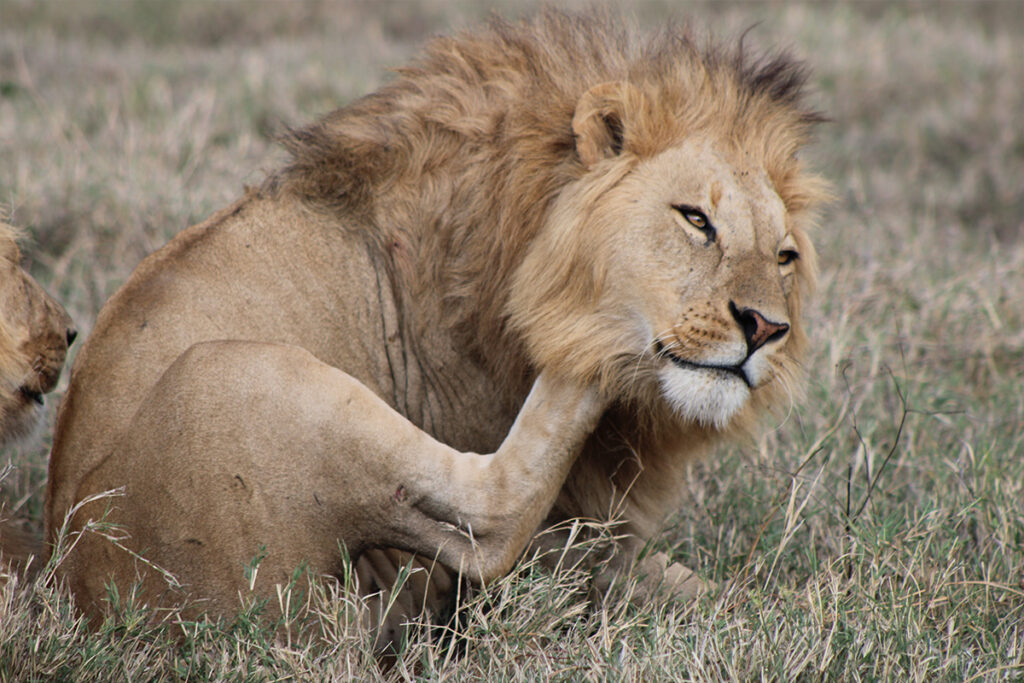Every year, the Serengeti Cultural Festival offers a unique spectacle where nature and heritage dance in harmony. Attendees find themselves mesmerized by the thrilling sight of wildebeests migrating amidst the vibrant backdrop of Maasai warriors showcasing timeless traditions. This festival not only celebrates wildlife but also serves as a bridge connecting past wisdom with contemporary practices.
Since its inception, the festival has become a testament to cultural preservation, drawing approximately 10,000 visitors annually to the heart of the Serengeti. It’s more than just a celebration; it’s an invigorating journey through the local customs of Tanzania. With events like storytelling, traditional music, and wildlife safaris, this gathering emphasizes the profound relationship between humans and nature.

The Serengeti Cultural Festival: An Exposition of Heritage and Wildlife
The Serengeti Cultural Festival is a vibrant celebration that uniquely blends culture and wildlife. Visitors are treated to a spectacular display of the region’s rich traditions and the majestic wildlife that calls Serengeti home. Whether it’s watching the great migration of wildebeests or seeing Maasai warriors in their traditional attire, this event offers an array of unforgettable experiences. Attendees often find themselves captivated by the rhythmic beats of traditional music echoing across the plains. Transitioning seamlessly between nature and culture, the festival offers insights into the harmonious coexistence between humans and their environment.
One can explore the fascinating wildlife that the Serengeti hosts. From lions roaming free to elephants marching in herds, the variety is astounding. This event provides a rare chance to witness the circle of life. According to here is the article, the festival attracts thousands of tourists every year. As these visitors engage with the natural world, they gain a deeper appreciation for ecological balance.
The cultural aspect of this festival is equally captivating. Visitors can immerse themselves in age-old traditions ranging from storytelling to dance. The Maasai people, renowned for their vibrant customs, play a pivotal role in these celebrations. As noted according to the article, interactive workshops offer hands-on learning experiences. Here, attendees can learn about traditional crafts and ways of life that have been preserved for centuries.
Beyond being a cultural feast, the festival significantly boosts Tanzania’s tourism. The influx of tourists supports local economies and highlights the importance of conserving natural and cultural heritage. In turn, communities around the Serengeti benefit economically and culturally from the event. The festival showcases the best of Tanzania, providing a forward-looking perspective on sustainable tourism. Highlighting the blend of heritage and wildlife, it leaves a lasting impact on all who attend.
Dancing of Maasai#serengeti Tanzania#female guide community initiatives#guides# Serengeti# wildlife
The Blend of Natural and Cultural Beauties
The Serengeti Cultural Festival seamlessly marries the wonders of nature with the richness of Tanzanian traditions. The vast savannahs act as a natural stage where wildlife coexists with time-honored cultural practices. Whether it’s spotting a herd of zebras or witnessing a traditional dance, each moment is an enthralling experience. Tourists are often awed by the balance found between the realm of wild animals and the cultural landscape. This unique fusion creates memories that resonate long after the festival concludes.
During the festival, visitors can explore diverse activities that highlight the region’s natural and cultural treasures. Activities include guided safari tours and interactive cultural sessions. Through safari, participants gain close encounters with iconic species like giraffes and elephants. Meanwhile, cultural sessions allow them to witness and engage with Maasai traditions. This combination of events provides a well-rounded understanding of the Serengeti’s offerings.
For dining, the festival features a showcase of local flavors. Food stalls offer dishes that reflect Tanzania’s culinary diversity. Some popular items include:
- Ugali, a staple made from maize flour
- Nyama Choma, which is roasted meat
- Chapati, a type of flatbread.
Tasting these dishes is like taking a delicious journey through Tanzanian culture. Every bite provides an added layer to the festival’s appeal.
The festival not only entertains but educates, promoting conservation and cultural preservation. Workshops and exhibits emphasize sustainable practices vital for future generations. The festival’s focus on education ensures that the importance of protecting nature and culture is understood globally. Through such initiatives, the Serengeti Cultural Festival emerges as a beacon of hope for both wildlife conservation and cultural heritage. These efforts foster a deeper respect and admiration for Tanzania’s natural and cultural beauties.
The Unique Wildlife Experiences in the Serengeti Cultural Festival
Attending the Serengeti Cultural Festival offers a remarkable chance to experience wildlife in its natural habitat. The sight of animals like lions, elephants, and rhinos roaming freely creates an awe-inspiring backdrop. Visitors often embark on safari tours, where they eagerly anticipate spotting the “Big Five” game animals. Each safari presents an unpredictable adventure, offering a firsthand look at nature’s wonders. This close interaction provides a profound appreciation for wildlife and its role in the ecosystem.
A significant highlight of the festival is the annual wildebeest migration. Witnessing thousands of wildebeests crossing the plains is a breathtaking sight. This massive movement of animals paints a living picture of life and death in the wild. Alongside the wildebeests, zebras and gazelles join the journey, creating a kaleidoscope of motion and color. Visitors frequently discover themselves mesmerized by the sheer scale and beauty of this natural spectacle.
| Animal | Characteristic |
|---|---|
| Lion | King of the Jungle |
| Elephant | Largest land animal |
| Rhinoceros | Endangered species |
Another thrilling adventure is bird watching, given the Serengeti’s vast avian diversity. With over 500 species, it’s a paradise for bird enthusiasts. Common sightings include the African fish eagle and the crowned crane. The endless skies serve as a striking canvas for these winged wonders. Such activities offer a peaceful yet exciting way to engage with the Serengeti’s natural environment.
Embracing Tradition: The Cultural Showcase at the Serengeti Festival
At the Serengeti Cultural Festival, tradition takes center stage, offering an immersive experience into Tanzania’s rich cultural heritage. Visitors are greeted by the vibrant colors and energetic rhythms of traditional dances. These performances are not just entertainment; they are storytelling mediums that convey historical narratives and community values. The Maasai, a renowned indigenous group, play a significant role in these cultural displays. Their dance, known for high jumping and synchronized movements, captivates audiences and provides a glimpse into their warrior ethos.
Workshops at the festival offer hands-on experiences in traditional crafts and practices. Participants can learn the intricate art of beadwork, a centuries-old skill passed down through generations. They can also try their hand at creating pottery, guided by local artisans. These interactive sessions deepen the understanding and appreciation of the skills required to craft these beautiful items. The opportunity to make something with their own hands is incredibly rewarding for participants.
Storytelling sessions at the festival are another highlight, where elders recount tales of bravery, wisdom, and morality. These stories, often accompanied by traditional music, resonate deeply with listeners. They serve as a link to the past, preserving the oral history that defines Tanzanian identity. Listening to these tales under the starry Serengeti skies adds a magical touch to the experience. It is a powerful reminder of the importance of preserving these narratives for future generations.
The culinary offerings at the festival provide a delicious journey through Tanzanian culture. Visitors can sample a variety of traditional dishes made from local ingredients. Some popular items include:
- Ugali, a maize-based staple
- Nyama Choma, grilled meat
- Sukuma, a green leafy vegetable
- Chapati, a type of flatbread
Each dish tells its own story, reflecting the agricultural practices and regional flavors of Tanzania. Sharing meals in a communal setting fosters a sense of togetherness and celebration.
The festival also features traditional music performed with instruments like the ngoma (drum) and kayamba (rattle). These instruments create a rhythmic foundation that is both hypnotic and dynamic. Music is an essential part of Tanzanian culture, marking significant ceremonies and daily life. Live performances allow visitors to feel the pulse of the culture and understand its integral role in societal functions. The sounds of the Serengeti Festival linger in the hearts of attendees long after the event.
In addition to entertainment, the festival addresses cultural preservation and sustainable living. Exhibits and talks highlight efforts to protect Tanzania’s cultural heritage and promote environmentally friendly practices. This educational aspect ensures that visitors leave with knowledge about the importance of conservation. It reinforces the festival’s role in fostering a holistic understanding of the interplay between culture and the environment. These initiatives make the Serengeti Festival not just a celebration but a movement towards preserving Tanzania’s unique cultural legacy.
The Impact of the Serengeti Cultural Festival on Tanzanian Tourism
The Serengeti Cultural Festival has significantly boosted Tanzanian tourism by attracting a diverse array of visitors. Travelers from around the world come to experience the unique blend of wildlife and cultural heritage. This influx of tourists generates substantial revenue, benefiting both local communities and national tourism. Hotel bookings, safari tours, and cultural workshops see a surge during the festival period. The economic benefits help preserve both natural and cultural assets for future generations.
Local businesses thrive during the festival, as they cater to the growing number of guests. Markets and stalls set up near the festival grounds offer handmade crafts and local delicacies. The demand for traditional items creates a sustainable income stream for artisans and vendors. Additionally, this commercial activity promotes the preservation of traditional skills and crafts. By purchasing locally made products, tourists contribute directly to the community’s well-being.
The festival also enhances Tanzania’s global reputation as a top tourist destination. Highlighting the country’s rich cultural heritage alongside its famous wildlife draws international attention. Media coverage and social media posts from attendees spread the festival’s popularity. This widespread publicity encourages more tourists to consider Tanzania for their next vacation. The festival’s success showcases Tanzania as a destination where culture and nature coexist harmoniously.
Tourist satisfaction rates are notably high for those attending the Serengeti Cultural Festival. Visitors appreciate the opportunity to engage deeply with local cultures and breathtaking wildlife. Surveys have shown that most attendees return with positive impressions and a desire to revisit. Such experiences foster long-term loyalty and repeated visits. This continuity ensures that the festival remains a cornerstone of Tanzanian tourism.
The festival supports ongoing conservation efforts by educating tourists on the importance of preserving natural habitats. Exhibits and talks provide insights into sustainable practices that protect the environment. Awareness campaigns run by the festival play a crucial role in promoting responsible tourism. By engaging tourists in conservation activities, the festival helps ensure the Serengeti’s ecological health. This educational aspect aligns with global efforts to foster environmentally conscious travel.

Frequently Asked Questions
The Serengeti Cultural Festival captivates attendees with its vibrant blend of traditional practices and awe-inspiring wildlife. Below are some of the most frequently asked questions regarding this unique event.
1. What can visitors expect to see during the wildebeest migration at the festival?
During the Serengeti Cultural Festival, visitors witness the great wildebeest migration, one of nature’s most spectacular events. Thousands of wildebeests, accompanied by zebras and gazelles, move across the Serengeti. This mass movement offers a rare chance to observe the intricate behaviors and survival strategies of these animals.
The migration also attracts predators like lions and crocodiles, creating dramatic moments that showcase the harsh realities of life in the wild. The sight of this natural phenomenon against the backdrop of cultural festivities ensures a memorable experience for all attendees.
2. How does the festival benefit local communities in the Serengeti?
The Serengeti Cultural Festival significantly benefits local communities by providing economic opportunities. Tourism generated by the festival boosts local businesses, including hospitality, crafts, and food services. This influx of visitors creates jobs and supports sustainable economic growth in the region.
Additionally, the festival promotes cultural preservation by showcasing traditional practices and crafts. Interactive workshops allow visitors to learn directly from local artisans. This not only helps preserve traditional skills but also fosters a sense of pride and cultural continuity among the local people.
3. What types of traditional crafts can visitors experience at the festival?
Visitors to the Serengeti Cultural Festival can engage with a variety of traditional crafts that highlight Tanzanian heritage. Workshops offer hands-on experiences in beadwork, pottery, and basket weaving, guided by skilled local artisans. These crafts provide insight into the techniques and cultural significance behind each creation.
Purchasing these handmade items supports the artisans and keeps these traditions alive. The crafts demonstrate the creativity and craftsmanship of the local communities, offering visitors a tangible souvenir of their festival experience.
4. How does the festival promote wildlife conservation?
The festival plays a crucial role in promoting wildlife conservation by raising awareness among visitors. Educational exhibits and talks highlight the importance of preserving the Serengeti’s unique ecosystems. These sessions discuss conservation strategies and the efforts needed to protect the wildlife and their habitats.
By involving tourists in conservation activities, the festival fosters a greater understanding and appreciation of ecological balance. Attendees learn the impact of their actions on the environment and are encouraged to support conservation initiatives beyond the festival.
5. Are there any interactive activities for children at the festival?
The Serengeti Cultural Festival offers various interactive activities designed to engage children and families. These include educational games, storytelling sessions, and cultural workshops tailored for young audiences. Activities are designed to be fun and informative, helping children connect with both nature and culture.
Children can also participate in guided wildlife tours, offering them a close-up view of the animals and their behaviors. These experiences aim to inspire a passion for wildlife conservation and cultural appreciation from a young age.
At Serengeti cultural festival 2019
Conclusion
The Serengeti Cultural Festival serves as an unparalleled platform where wildlife conservation and cultural preservation intersect. This annual event not only showcases the majestic beauty of the Serengeti but also underscores the importance of safeguarding Tanzania’s rich traditions. Experts and attendees alike find immense value in the festival’s ability to educate and inspire.
As the festival continues to grow, it remains a beacon for sustainable tourism and community empowerment. Its impact reverberates widely, reinforcing the integral relationship between humans, heritage, and nature. By attending, participants contribute to a shared future that honors both cultural pride and ecological balance.



